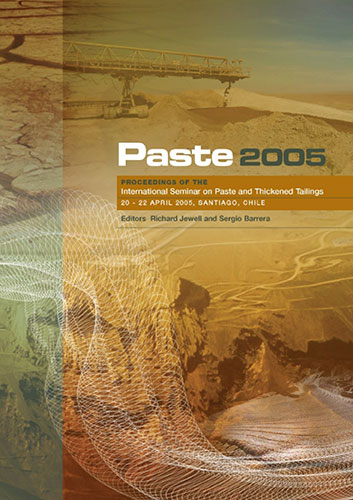Designing for Paste Thickening Testwork and Sizing for Paste Thickeners

|
Authors: Arbuthnot, IM; Triglavcanin, R.A |
DOI https://doi.org/10.36487/ACG_repo/563_6
Cite As:
Arbuthnot, IM & Triglavcanin, R.A 2005, 'Designing for Paste Thickening Testwork and Sizing for Paste Thickeners', in R Jewell & S Barrera (eds), Paste 2005: Proceedings of the International Seminar on Paste and Thickened Tailings, Australian Centre for Geomechanics, Perth, pp. 99-116, https://doi.org/10.36487/ACG_repo/563_6
Abstract:
In the mineral processing industries, there is an increasing need to design thick- eners which are able to produce high density underflows usually referred to as “paste”. The behaviour of a flocculated suspension in compression needs to be well understood in order to arrive at a reliable thickener tank configuration (i.e. diam- eter, cone angle and depth) for a required paste result. As a suspension approaches paste consistency, its fluid characteristics change markedly. It develops a high yield stress, and may have an increased tendency to form agglomerates, which in thickener tanks leads to a phenomenon known as “rotating beds”, “donuts”, or “islands”. These characteristics present challenges to the designer of the rake mechanism. The subject paper addresses the requirements for designing a paste thickener, covering the following topics: • Testwork for thickener sizing. • Design of rake mechanisms. • Suspension rheology and effect on design. 100 Paste 2005, Santiago, Chile Designing for Paste Thickening... Arbuthnot, I.M. and Triglavcanin, R.A.
© Copyright 2026, Australian Centre for Geomechanics (ACG), The University of Western Australia. All rights reserved.
View copyright/legal information
Please direct any queries or error reports to repository-acg@uwa.edu.au
View copyright/legal information
Please direct any queries or error reports to repository-acg@uwa.edu.au